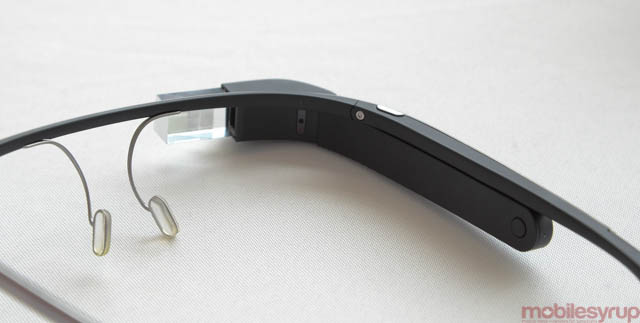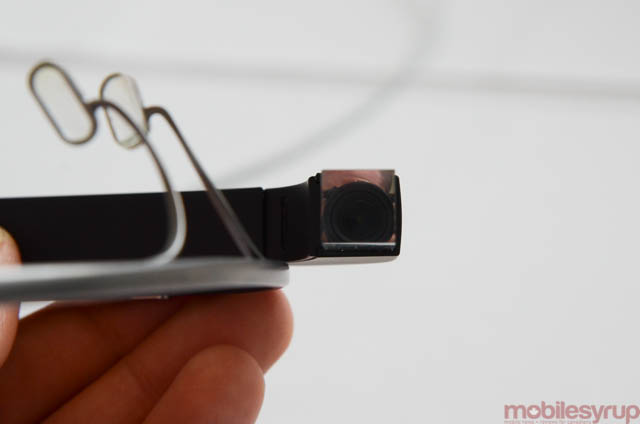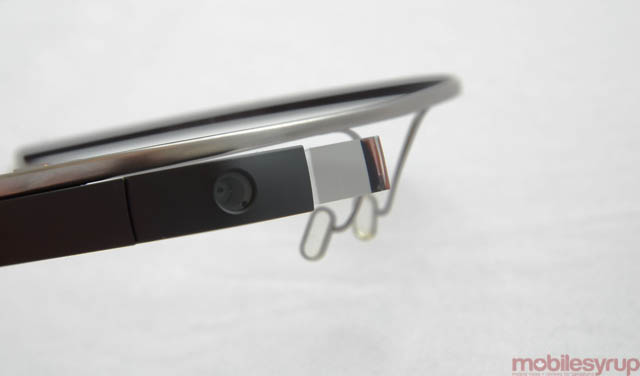
It’s not uncommon to walk along the foggy piers of San Francisco and see millionaires, caretakers of a new economy that is changing our lives every day. These men and women are not celebrity famous, in that they’re not immediately recognizable on a magazine cover or TMZ, but they’re more influential and far more approachable. Financial advisors mingle with Twitter employees and Facebook faithful, and the throngs of endlessly energetic twenty-somethings convene over beers or Americanos less as competitors than compadres.
The products and services created by these creative designers, developers and engineers have far-reaching effects, but in my brief sojourn to San Francisco during Google I/O, I found myself enthralled by a new class of legends: Glassholes.
During the day-one keynote of Google I/O 2012, Sergey Brin and his parachute artists endeared its six thousand-strong audience, and hundreds of thousands of online viewers, to Glass, at the time primarily a technology demo. These flimsy-looking clear monocles looked, at least from afar and through casement, as though they were envisioned by a team of 1960’s film designers postulating on the future of computing. After using Glass for some time, both in its natural state among hundreds of others and back in Toronto courtesy of Bnotions‘ Matthew Patience, who was selected as one of Google’s limited “Glass Explorers,” I’m less convinced that Glass itself is the future of computing than something like it will eventually replace your smartphone.
Google’s intentions for Google Glass are presently unclear: will it attempt to wrest control away from your hand, or will it work as a companion to the main computer in your pocket, forever symbiotically attached to the far more expansive processing capabilities of your smartphone? At the moment, those restrictions are physical: there is only so much space next to your head for a battery, a system-on-a-chip and a camera module, not to mention the screen projected in front of your eye.
But as years go by, these physical elements will take up less space, and may be integrated into the frames and lenses of regular eyewear; in five or ten years the modules may be indistinguishable from a regular pair of bifocals — they’ll just cost three times as much.

I spoke to Patience at Bnotions’ Toronto offices about Glass and what he sees as the future of wearable tech, and he was emphatic about its eventually replacement of the smartphone. His vision, like that of many idealist early adopters — the Optimists — evolves (or devolves, depending on the appropriate nomenclature) to implants, where humans will be cut open and outfitted with self-sustaining hardware, from sensors to camera modules — that will connect us to the Internet and the Internet of Things. They will tell our temperature, give us feedback about our overall health, monitor our sleep cycles, make us better.
Aside from Glass, there are products that already perform many of these functions, as perfunctory as they may be. Companies like Jawbone and Fitbit, Pebble and Nike, sell clips, bracelets, watches and belts with myriad sensors, with motivations as diverse as heart rate monitoring to pressure sensitivity. Samsung’s Galaxy S4 even comes with its own built-in barometer and thermometer, consolidating what may have been three separate products just a year ago.
Google Glass has the dubious distinction of being the first well-known eye-based wearable computing device, and that it has a camera capable of recording video makes it a potential privacy nightmare. Not that Google wasn’t aware of these land mines when designing the thing: there is a limit to how long one can film for in a single stretch, and because the eyepiece glows an unmistakeable blue when the camera is in use, it’s difficult to walk around surreptitiously recording something you shouldn’t.
But Glass was made to be hacked — it is a developer device after all — and can and likely will be used for nefarious purposes. That’s the motivation of the individual user, and a product or brand cannot be held accountable for such actions. The potential of Glass is not in its potential for evil but in its eventual adoption as a tool for good.
At the moment, though, Glass is a nice technology demo. Patience explains that Google hasn’t yet released its full GDK — Glass Development Kit — the tools that will allow programmers to create great native apps for the platform. Instead they’re required to create Glassware, small pieces of HTML5, CSS and Javascript code that mostly pull information from the web such as Twitter feeds or Google+ photos. And while it’s possible to post from Glass, namely photos or short voice-based social updates, the interaction currently feels limited, forced. I see potential in integrating one-dimensional text input software Minuum, which we’ve covered extensively, in overcoming the limitations of voice, but how it would be implemented remains a mystery.

When I asked Patience what he most uses Glass for he admitted, almost as a question, “the time?” That, and taking the occasional photo, amount to the current use case for a device with seemingly limitless potential. An obvious one, the creation and consumption of porn, was recently banned by Google after a company, MiKandi, released its first app titled Tits & Glass.
Google also banned the distribution of apps that take advantage of facial recognition, claiming “we won’t add facial recognition features to our products without having strong privacy protections in place.” The early stages of the Glass ecosystem is the basis for creative endeavours by users and developers alike and, as with smartphones in their early days, you can be sure people will find a way to circumvent these restrictions.
I spoke to James Maynard, CEO of Wavefront, an accelerator for wireless companies based out of Vancouver, and he hesitated to endorse Glass as a fully-formed product before he understands the social, cultural and, most importantly, privacy implications of the technology. A huge proponent of wearable sensors and machine-to-machine technology, Maynard, like many other mobile executives, doesn’t know what to think.
Apple CEO, Tim Cook, recently dismissed Glass during an interview, claiming it “lacked broad appeal outside of certain vertical markets.” It’s too early to say whether, like many others, he doesn’t see the forest through the trees, or if he’s nailed the inherent problem with all wearable tech: it just doesn’t do anything better than our phones do today. Yet.
It would be myopic to think that we know what technology is going to look like five, ten or twenty years from today, just as we likely in 2003 didn’t expect to be tethered to our smartphones, checking them on average more than 150 times daily. The very notion of being able to record your life, grab information, directions and knowledge, without the use of your hands, is a remarkable concept, and we’re likely on the precipice of something even bigger than that.
Thanks to BNOTIONS for the time, the place and the Glass.
MobileSyrup may earn a commission from purchases made via our links, which helps fund the journalism we provide free on our website. These links do not influence our editorial content. Support us here.


